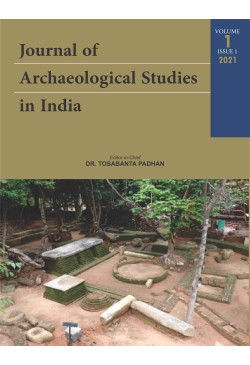
Journal of Archaeological Studies in India
Frequency :Bi-Annual
ISSN :2582-9831
Peer Reviewed Journal
Vestiges of the Thoban Matha and Temples
Singh, A.K. 2022. Vestiges of the Thoban Matha and Temples. Journal of Archaeological Studies in India, 2: 1, pp. 1-25. https://doi.org/10.47509/JASI.2022.v02i01.01
A Note on Rock Art Site of Bharamtoli hills near Ranchi City of Jharkhand
Shekhar, H. 2022. A Note on Rock Art Site of Bharamtoli hills near Ranchi City of Jharkhand. Journal of Archaeological Studies in India, 2: 1, pp. 27-35. https://doi.org/10.47509/JASI.2022.v02i01.02
Conceptual Reconstruction of the Rock-cut Cave Excavation Process – A Case Study of Shelarwadi Caves, Maharashtra, India
Gokhale, P., & Sathe, S. 2022. Conceptual Reconstruction of the Rock-cut Cave Excavation Process – A Case Study of Shelarwadi Caves, Maharashtra, India. Journal of Archaeological Studies in India, 2: 1, pp. 37-47. https://doi.org/10.47509/JASI.2022.v02i01.03
Built Heritage Tradition of Odisha Special Reference to Temples of Bhubaneswar
Behera, R.P., & Sahoo, S.R. 2022. Built Heritage Tradition of Odisha Special Reference to Temples of Bhubaneswar. Journal of Archaeological Studies in India, 2: 1, pp. 49-57. https://doi.org/10.47509/JASI.2022.v02i01.04
The Dar-us-Shifa at Mandu
Sharma, R. 2022. The Dar-us-Shifa at Mandu. Journal of Archaeological Studies in India, 2: 1, pp. 59-65. https://doi.org/10.47509/JASI.2022.v02i01.05